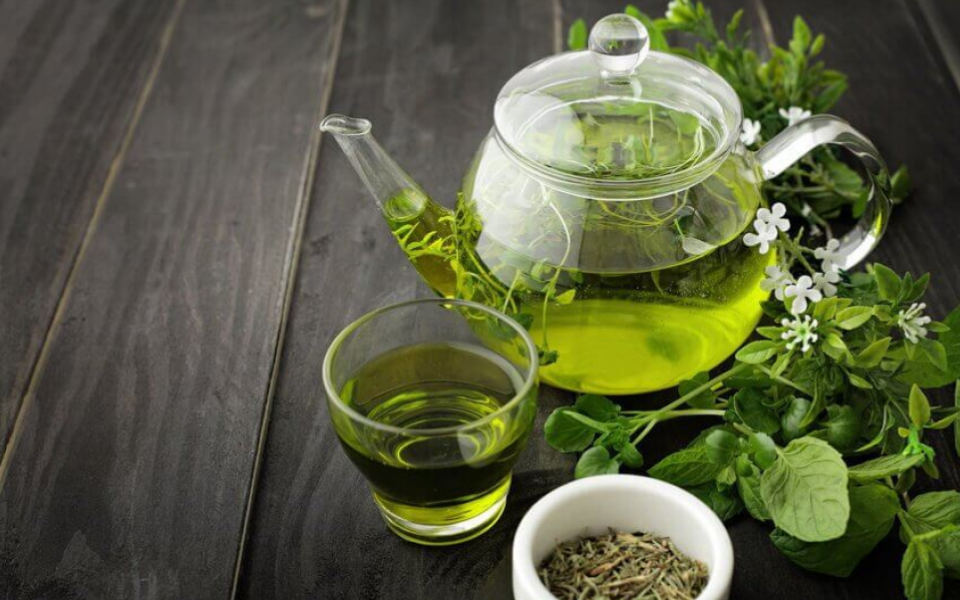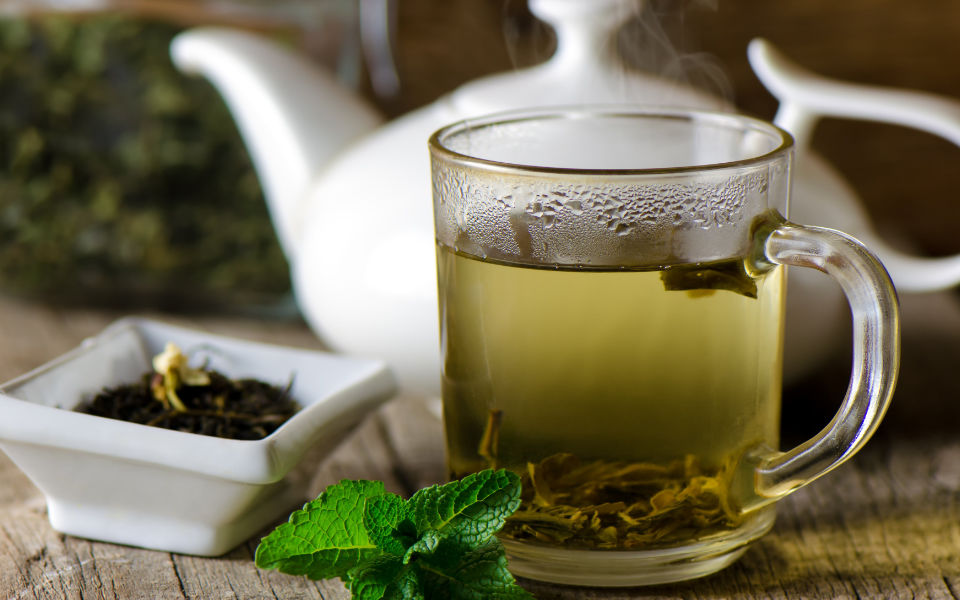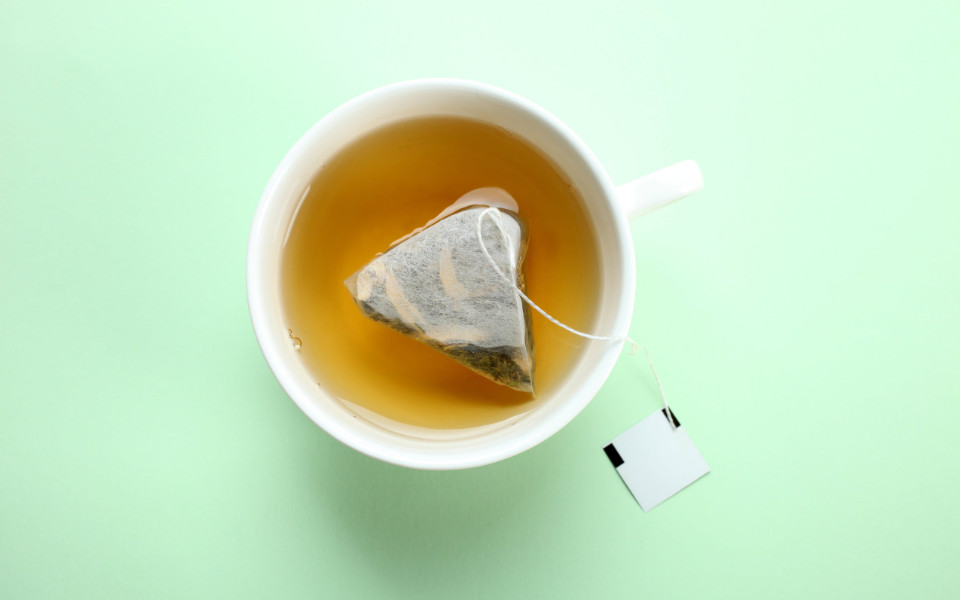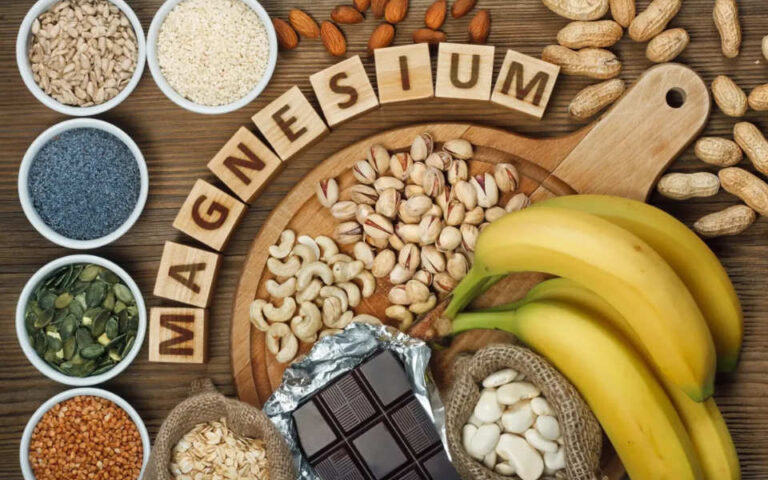Green tea is a healthy beverage that has been favoured by the ancients for thousands of years. It has gained some mainstream attention recently, many thanks to the high praises of Jennifer Aniston, Johnny Depp, and Lady Gaga (to name few).
If you want to be refreshed like these celebrities in the best way possible, then it’s time that you set your sights on green tea. Made from the leaves and buds of the plant Camellia sinensis, green tea can help make you look (and feel) good inside out.
What’s in Green Tea?
Although it has become popular lately, green tea has already been around for over five millennia. A favourite drink in the Far East, it gets its green colour from unprocessed and unfermented tea leaves.
Green tea leaves are usually grown in higher altitudes, specifically in the mountains of East Asia. While some are commercially picked, some variations are picked by hand. According to connoisseurs, this type of tea offers a robust, yet sweeter taste.
Compared to black tea, green tea is richer in polyphenols, or nutrients that have numerous benefits for the body. It mainly contains flavonoids, one of which is the catechin epigallocatechin gallate (EGCG). It functions as an antioxidant, and as such can help neutralize free radicals that are harmful to the body.
What Does Green Tea Do For You?

Green tea is not only refreshing, but it is good for the mind and the body as well. Here are the many green tea health benefits that are guaranteed to impress you:
1. Reduces inflammation
Green tea is rich in EGCG, which is said to have anti-inflammatory effects on the body. According to research, EGCG can help suppress the activity of proteins and enzymes that trigger inflammation. As such, it may be useful in alleviating the symptoms of arthritis and inflammatory bowel disease.
2. Fight bacteria
Green tea’s ability to fight bacteria can be traced back to its catechins, which make up 25 to 35% of the leaves’ dry weight. According to research, EGCG can help kill bacteria by destroying their cell membrane. As such, it can fight several organisms, including:
- Escherichia coli, which is responsible for traveler’s diarrhea, pneumonia, and meningitis, to name a few.
- Eikenella corodens, which is a resident bacterium of the mouth and upper respiratory tract. It can be detrimental to certain populations, including those with head and neck cancers, insulin-dependent diabetics, and intravenous drug users.
- Porphyromonas gingivalis, which is a microbe that can cause periodontal disease. In rare cases, it can even lead to arthritis and Alzheimer’s disease.
Green tea is potent enough to fight ‘stronger’ infections, including Staphylococcus aureus infections that are resistant to most medications.
3. Inhibits viruses
Apart from disrupting bacterial growth, research shows that green tea may help inhibit these viruses as well:
- Influenza A and B viruses, which can lead to severe flu
- Hepatitis B virus, which causes a liver infection
- Hepatitis C virus, which can affect the liver and lead to cancer
- Herpes Simplex virus 1, which causes oral herpes (cold sores)
- Epstein-Barr virus, which causes infectious mononucleosis
- Adenovirus, which can lead to pink eye, cough, sore throat, fever, or diarrhea
- Enterovirus, which can cause hand-foot-and-mouth disease in children
- Rotavirus, which can cause severe diarrhea in infants and children
- Human T-cell lymphotrophic virus 1, which is associated with adult leukemia
- Human Immunodeficiency virus, which can impair the immune system and lead to Acquired Immunodeficiency Syndrome
It may also help fight the growth of the following viruses, which are usually transmitted by mosquitoes and ticks:
- Dengue virus, which is the primary cause of dengue hemorrhagic fever
- Japanese Encephalitis virus, a mosquito-borne virus that can precipitate viral encephalitis
- Tick-born Encephalitis virus, which causes brain infection cases in Europe and Asia
- Zika virus, which can lead to paralysis and birth defects in pregnant women
- Chikungunya virus, which may be transmitted by the yellow fever or Asian tiger mosquito
4. Lowers cholesterol levels – and reduces the risk of heart attack and stroke
There are two types of cholesterol in the body. One is low-density lipoprotein (LDL), or the ‘bad’ cholesterol that causes arterial blockages. There’s also the ‘good’ cholesterol, which known as high-density lipoprotein (HDL). This, on the other hand, works by absorbing the bad cholesterol, transporting it back to the liver where they can be removed.
While LDL is essential for the body, too much of this can be harmful to health. Since it has the potential to clog the arteries, high levels of HDL can contribute to heart attack and stroke.
The risk of these diseases may be reduced with the regular consumption of green tea, which is rich in catechins. According to a study, these substances can help reduce LDL levels by as much as 5.30 mg/dl.
5. Controls blood sugar levels
Diabetes is a metabolic disorder characterized by high sugar levels. If left uncontrolled, this can damage the eyes, nerves, heart, kidneys, among many other organs.
Green tea may help prevent these complications with the help of its high EGCG content. According to a study, EGCG can mimic the action of insulin. As such, it may help normalize blood sugar levels by decreasing glucose production in the body.
6. Improves brain function
Compared to red and black tea, green tea benefits work better for the brain. According to a study, this drink may help prevent memory deficits, especially those that occur with Alzheimer’s disease.
With its rich antioxidant content, green tea may help prevent free radical damage to the brain. If left unchecked, free radicals can cause brain cell damage and death, which may later on progress to Alzheimer’s or Parkinson’s disease.
7. Helps fight certain cancers
Statistics show that 1,000 new cancer diagnoses are made in the UK every day. Unfortunately, about 450 succumb to complications daily. While there are many treatment options such as chemotherapy, radiotherapy, and surgery, they are not always 100% effective.
As such, scientists are looking for new promising therapies, including that of herbs and natural remedies. One product that has been explored is green tea, which may hold some promise due to its high catechin content.
For one, it contains EGCG that may help interfere with cell replication, and as such lead to tumour cell death. Its other component, Epigallocatechin (ECG), may help prevent the replication of leukemic cells.
As an antioxidant, green tea may help in the repair of cancer-damaged cells as well.
8. Enhances skin health
The benefits of green tea for skin conditions are quite aplenty.
To wit, its EGCG content acts well against androgen, a male hormone that triggers increased sebum production. As such, it has the potential to reduce oily skin – which can trigger subsequent acne development.
If you want to look younger, then you need to consider drinking green tea regularly. After all, it may help slow skin aging as it can help improve skin elasticity. It also helps protect the skin from the effects of UV rays, which play a significant role in premature skin aging.
Because of its UV-protective properties, green tea may also help reduce the risk of melanoma. This skin cancer, which accounts for 4% of all malignancies in the UK, often results from excessive exposure to harmful sun rays.
9. Aids in weight loss
Many people use green tea for weight loss. Its benefits are often attributed to the actions of catechin and caffeine, both of which may help boost your metabolism. Catechins can also help inhibit carbohydrate digestion and absorption, which may pave the way for weight loss.
Several studies show that green tea can help promote weight loss by as much as 3.5 kilograms and reduce body mass index by as much as 1.3 kg/m2. Results also show that it can help trim the waistline by as much as 3 centimeters.
a) Does green tea help you lose weight without exercise?
While green tea is good for your figure, it is best paired with regular physical activity. According to a Men’s Health article, exercising 180 minutes a week – coupled with catechin-rich green tea – works better in reducing belly fat. This is in comparison to a regimen devoid of a catechin-loaded beverage.
b) Which tea is best for weight loss?
With the many green tea benefits for weight loss, you might find yourself asking “Which is the best tea to drink?”
Of the 7 types of green tea, dietitian Isabel K. Smith cited Matcha as the best variant to take for weight loss. She explained in an interview that it has the most nutrient (antioxidant) content, as “the whole leaf is ground and consumed as part of the beverage.”
Compared to other weight loss drinks, green tea calories are also very minimal. In fact, one cup (240 ml or 8 ounces) only contains 2-3 calories.
What are the Side Effects of Green Tea?

While it does many wonders to your health, there are some green tea side effects that you might find bothersome. They include:
1. Stomach complaints
Green tea contains tannins, which may help increase stomach acid production. As such, it can lead to stomach upset, even a burning sensation in the abdomen. It may also cause nausea and constipation in some people.
To help prevent the disadvantages of green tea, it should be taken in between meals – and not on an empty stomach.
Is green tea a laxative?
When taken in excess, green tea can cause constipation. But if taken in the right amounts, green tea can promote digestive health. It contains a good amount of caffeine, a stimulant that can help promote easier bowel movement.
2. Sleep disruptions
Green tea contains some caffeine, which can help increase mood, energy, and concentration. Although green tea caffeine content is markedly lower than coffee, it can affect those who are sensitive to the effects of caffeine. As such, it has the potential to affect your sleeping patterns, especially if you consume it late at night.
How Much Green Tea Should I Drink?
As mentioned, green tea contains some caffeine. A serving of green tea contains about 35 to 80 mg of caffeine, which can be dehydrating if taken in excess amounts. Because of this, experts recommend drinking a maximum of 3 cups a day.
1. Is it good to drink green tea every day?
Yes, especially if you consume it during certain hours of the day. In his interview with NDTV food, Dr. Anju Sood recommended taking green tea at 10 to 11 am morning, when your metabolism is at its highest. A cup can help boost it even more, which may be beneficial if you are following a green tea weight loss regimen.
Another good time to drink green tea is in the evening. This is when your metabolism is at its lowest, and as such green tea can help kick it up a notch. A friendly reminder though: you should not drink it too late in the night as it may end up ruining your sleep.
2. Is green tea healthier than coffee?
Green tea benefits and side effects are plenty, though the former upend the latter. Because of this, a lot of people often compare green tea to another popular beverage: coffee.
And why not? For one, both are beneficial to your health. These two drinks are rich in antioxidants, and as such, they may help reduce the risk of diabetes, Parkinson’s disease, and certain cancers.
As for cons, both coffee and green tea have the potential to stain your teeth. They are also diuretics, which means drinking excessive amounts of each can drain essential water content from your body.
However, coffee seems to have more adverse effects in the long run. As mentioned, it has a higher caffeine content – 100 to 400 milligrams per serving to be exact. As such, excessive coffee consumption can make you feel anxious and jittery. This caffeine content can also spike your blood pressure, which makes coffee a ‘bad’ drink for hypertensive people.
Whereas green tea can help lower cholesterol levels, coffee can increase blood cholesterol by a small margin. It is also more acidic, which can lead to stomach pains in some people.
High coffee consumption may also be detrimental to the bones. A report has shown that it can decrease bone density anywhere from 2 to 4%.
How to Drink Green Tea

Whether you have green tea leaves or matcha powder, make sure to brew them in hot (never boiling) water. For optimum results, you should use water with temperatures ranging from 158˚ to 167˚F or 70˚ to 75˚C.
Now, you can pour the hot water over the tea leaves/powder. Let the water sit for a minute before drinking.
You can shorten the brew time for a milder taste, or prolong it to get a more robust flavour.
Benefits of green tea with lemon
If you like, you can also add lemon, lime, or ginger into your cup of green tea. Not only do they help improve taste, but the benefits of green tea with lemon may even be better for the body.
That’s because lemon and other citrus fruits make the intestines more acidic. This environment actually works better when it comes to absorbing nutrients. According to a report, acidic juices can help improve catechin absorption by as much as 6 times.
More Uses of Green Tea
Apart from drinking, green tea benefits can be enjoyed by applying the formulation directly to the skin.
1. Reduces undereye bags
Don’t throw your used tea bags just yet! Instead, cool two bags inside your fridge for an hour. Place them on top of your closed eyes for 10-15 minutes and you’ll definitely feel the difference.
So how is this possible? Well, green tea is rich in flavonoids, which can help reduce the puffiness underneath your eyes. It can also help reduce fine lines, which make it useful against crow’s feet and whatnot.
2. Lessens irritation and inflammation
Burns and eczema are just some of the skin conditions that can irritate the skin. Green tea ointment, however, may help reduce these pesky symptoms. After all, green tea can help increase the levels of benzoic acid, a substance that can help alleviate skin irritation and inflammation.
3. Lowers sebum production
The benefits of green tea for skin are many. As a natural astringent, a topical green tea formulation can help reduce facial sebum production. Apart from making you look less greasy, green tea use may help reduce the number of blackheads and whiteheads as well.
3. Fights acne
As previously mentioned, green tea can help fight bacteria and viruses. As such, applying green tea formulations directly on affected sites may help reduce infection.
This is especially the case for acne, which may be caused by an outgrowth of the bacteria Propionibacterium acnes. Research shows that a lotion containing 2% green tea can help reduce blemishes in as much as 60% of the participants.
How to Buy and Store Your Green Tea

If you prefer using green tea leaves, know that fresher leaves are always best.
As such, you should check the manufacturing date (usually located on the top or bottom of the tea box) before buying the product. It is ideal to purchase leaves that were fermented within the last four months, as the flavour tends to ‘fade’ as time progresses.
Once you have opened a container of green tea leaves, you need to store the remaining portions in an airtight container. This will help slow down the reactions that can affect the tea’s flavour and nutrient content.
What is the Best Green Tea to Buy?
Green tea comes in different variants, each with its own brand of taste and brewing procedure. If you are on the look-out for which green tea is best for your health, then all you need to do is choose from any of these 7 types:
1. Matcha
Perhaps the most popular type of all, green tea with matcha is made from leaves that have been grown in the shade for 3 weeks. The stems and veins are carefully removed before they are steamed, roasted, and ground into fine matcha powder.
2. Gyokuro
Popularly known as Jade Dew, Gyokuro is made from tea bushes that were covered with a screen or cloth. Like matcha, Gyokuro leaves are protected from the hot sun for 3 weeks. This gives the tea its light yet smooth signature flavour.
3. Sencha
Another one of the more popular Japanese green teas is Sencha, which is made by infusing whole leaves in hot water.
4. Hōjicha
Hōjicha is a tea made from toasted tea leaves. As such, it comes with a toasty, caramelly flavour that works well with sweet and savoury fares.
5. Biluochun
While most green tea variants are made in Japan, there are some can be traced back to its original home country of China. One is Biluochun, which is made from tea leaves grown in the Dongting Mountains of Jiangsu.
Biluochun – which translates to ‘Green Nail Spring’ – gets its name from its shape. After all, the tea leaves are rolled into a spiral that is reminiscent of a snail shell.
6. Longjing
This Chinese green tea variant derives its name from the village where it came. The tea is so immensely popular that it gained the status of “Imperial tea” during the Qing dynasty.
Longjing tea, which translates to “Dragon Well,” is noted for its mild and sweet flavour. It also has some hints of chestnut, which makes this variant a crowd favourite until now.
7. Genmaicha
Genmaicha – which literally translates to brown rice tea – is made from (you guessed it) unprocessed brown rice. This ingredient is soaked, steamed, roasted, and popped. It is then mixed in equal amounts to green tea (typically Sencha). Because of this combination, this savoury tea is well-known for its nutty and toasty flavour.
Conclusion
Green tea is a healthy beverage made from unprocessed and unfermented Camellia sinensis leaves. Depending on your taste preference, you can choose from any of the 7 popular varieties.
Green tea benefits are aplenty. It can help reduce inflammation, as it can fight bacteria and viruses that cause infections. It can help lower blood cholesterol, as well as blood sugar levels in the body. It can help improve brain function, as it can reduce the risk of certain cancers.
Green tea can also help improve your appearance, as it can help control skin aging and reduce sebum production. It can also help promote weight loss, especially if done so with regular exercise.
Despite its many benefits, there are some minor green tea side effects. They include stomach upset and possible sleep disruption.
Green tea is best taken with hot water with temperatures 158˚ to 167˚F or 70˚ to 75˚C. Tea leaves or powders should be kept in airtight containers. This will help preserve its taste, as well as the nutrients that make green tea good for you.


